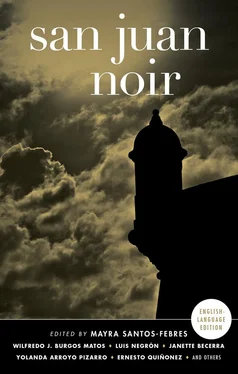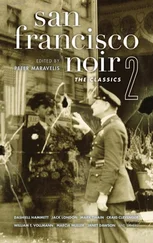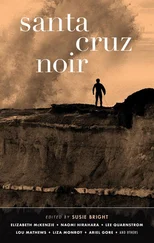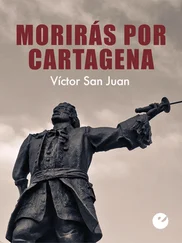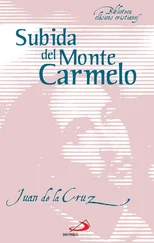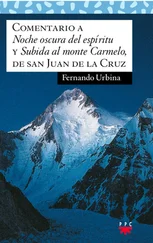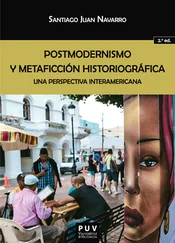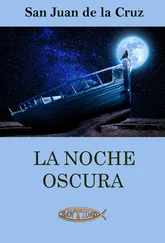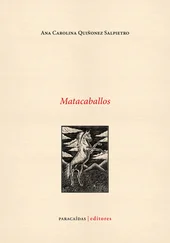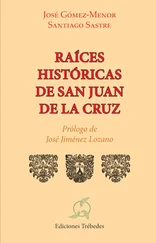Ernesto Quiñonez - San Juan Noir
Здесь есть возможность читать онлайн «Ernesto Quiñonez - San Juan Noir» весь текст электронной книги совершенно бесплатно (целиком полную версию без сокращений). В некоторых случаях можно слушать аудио, скачать через торрент в формате fb2 и присутствует краткое содержание. Город: New York, Год выпуска: 2016, ISBN: 2016, Издательство: Akashic Books, Жанр: Детектив, на английском языке. Описание произведения, (предисловие) а так же отзывы посетителей доступны на портале библиотеки ЛибКат.
- Название:San Juan Noir
- Автор:
- Издательство:Akashic Books
- Жанр:
- Год:2016
- Город:New York
- ISBN:978-1-61775-296-4
- Рейтинг книги:3 / 5. Голосов: 1
-
Избранное:Добавить в избранное
- Отзывы:
-
Ваша оценка:
- 60
- 1
- 2
- 3
- 4
- 5
San Juan Noir: краткое содержание, описание и аннотация
Предлагаем к чтению аннотацию, описание, краткое содержание или предисловие (зависит от того, что написал сам автор книги «San Juan Noir»). Если вы не нашли необходимую информацию о книге — напишите в комментариях, мы постараемся отыскать её.
San Juan Noir — читать онлайн бесплатно полную книгу (весь текст) целиком
Ниже представлен текст книги, разбитый по страницам. Система сохранения места последней прочитанной страницы, позволяет с удобством читать онлайн бесплатно книгу «San Juan Noir», без необходимости каждый раз заново искать на чём Вы остановились. Поставьте закладку, и сможете в любой момент перейти на страницу, на которой закончили чтение.
Интервал:
Закладка:
Plaza Las Américas, the center of everything. From Santa Cruz, Saint Thomas, and Monserrat — where a volcano spouts ash on its leeward side every ninety-some days — people come from all over the Antilles to buy things and lose themselves in the largest commercial center in the Hispanic, Anglo-Saxon, and Francophone Caribbean. “The people from the little islands” is what they call those individuals with ordinary features. You remember well that during your childhood, your grandma called them madamos . Actually, that’s what she called the really dark blacks, the purple blacks; the ones who did or didn’t wear turbans. Blacks blacker than you, with gigantic noses and protruding lower lips.
Teodoro Moscoso Bridge. You promise yourself you’ll look up who the hell that guy was on Wikipedia, because the truth is, neither you nor anybody you’ve asked knows. You’ve always imagined that it has something to do with Moscoso Pharmacy, the one you frequented as a kid on the way to the Cantaño boat launch, where one time they found a half-dozen dogs with their throats slit, and no one immediately responsible despite the fact that the suspects walked around at school quietly singing: Under my house, there’s a dead dog. The one who says eight, will eat it off their plate, one, two, three, four, five, six, seven...
Approaching the bridge you get unnerved, because you’ve reached that point of arrival. You stretch your neck even farther, and the old lady with the white Afro notices. She gestures to you with her hand, asking if you want her seat. You say yes. So she stands and you stand too, and from a distance, the flight attendant scolds you because you’re supposed to remain seated, the plane is about to land. When the warning ends, you’re already clutching the window.
You fasten your seat belt. You pull out your digital camera because you like to take photos of the landing. You count in silence and breath rhythmically. You’re about to pass over the booth of the excessively expensive toll that opens onto Avenida Central, and everything ceases to be Lilliputian. First photograph. You inhale and exhale. Now you count the flags of the damned United States and the blessed Island of Enchantment fixed to the bridge as they grow larger. Photograph. You inhale and exhale. You count the little houses on the water in San José, all of them half-fallen into the lagoon that’s deminiturizing in front of your eyes. You inhale. A boat and you replicate Gulliver’s gaze. You exhale. Flash. A San Juan police boat and you are Micromegas. You breathe in. Two kayaks. One bright blue and the other apple green. You breathe out. A jet ski. Another photo. You inhale. Another boat, the coast guard this time. A sequence of flashes. A police helicopter hovers far away, and you imagine it’ll wait until the air traffic clears to approach. You hold your breath. The mangrove. You turn off the camera’s flash and hold down the shutter to lengthen the sequence. The mangrove increasing in size and the bushes with splayed roots drinking from the pestilent lagoon. A body. A floating body. Your finger pressing the button gets nervous, but keeps shakily shooting the target. A woman floating in the water with breasts and downy pubis exposed. Her face so far away from you, from your plane, and lifeless. Zoom in on every detail, zoom in on every new horror. Arms extended, like the wings of the aircraft, but she doesn’t fly. A woman who doesn’t fly. Increase zoom to 60X Optical by 2000X Digital. Hands removed from those arms at the wrist; surgically severed without pain or glory. They’re gone. A woman, dead and incomplete. A corpse that screams of violence and welcomes you back to your homeland, after ten years of absence.
2.
You fall.
In the end you fall across the surface of the planet, which turns out to be the same as the surface of your homeland. You fall, landing and floating, intrigued and alone. So alone. Falling things have the significance of lost things, of abandoned things, of things invented to stave off madness, of the sudden daring that’s preceded by fear. A desperate need to tell of fallen things that will later keep you company is more than right and necessary.
You start breathing again when you pick up your bags at carousal ten. You pause and look at the screen of your camera where your photos have been stored. You zoom in and out to see every detail. You only know what’s been explained over the loudspeaker and by passengers with Internet access on their cell phones. Minimal information regarding the discovery, the crime scene, or the investigation. Everyone tried to move to the windows, to see what could be seen. You were one of the lucky few who caught a glimpse of the dead girl laid out like that — lifeless skin in its greatest splendor. Inert skin on an island that leaves so many alone, so many orphaned, widowed, and dispossessed. The rest of the travelers have resigned themselves to the speculations of those who saw something. There’s another hubbub inside Luis Muñoz Marín International Airport. Everyone is talking about it, speculating about the stranded people who won’t be able to make their flights out of the country because of the traffic jam. They’ve closed off various roadways including, of course, the one that connects to the bridge. The family members who would certainly be coming to pick up the arriving travelers wouldn’t be there either, as they haven’t been allowed through. No one was coming to get you anyway; you weren’t going to be received by anybody. A total helplessness impregnates the air, an ode to detachment. So witnessing those who are stranded gives you great pleasure.
3.
You leave your bags at a fleabag hotel in Isla Verde and get back in the rental car. You arrive at the San José police station from the opposite side of the bridge, coming in on Milla de Oro, behind Plaza las Américas. Your pithy journalism courses at Universidad del Sagrado Corazón provide the key to getting inside. You remove the little notebook and pencil, conveniently located in the front pocket of your striped shirt, identify yourself as a press correspondent, and show your driver’s license with the New York City logo. The checkpoint officer, not really paying attention, lets you pass. Already mingling with a small group of reporters, you simply fall in line and listen. Listen and pretend to write in your little notebook. Simulating professional interest, looking up and down. Listening with great care. Finding out as much as possible.
4.
At the funeral, you meet the dead girl’s mother, her sisters, her uncles, aunts, and cousins, who cry facing the casket, to the beat of a rhythm like a jukebox bolero. You add and subtract, and the obvious notable absence is the husband, a man originally from Saint Martin — he’s the only one not in attendance. The “best friend” is there, and she cries desperately, as if something valuable has been torn away from her. To those who ask, you say you were classmates with the dead girl. At Colegio San Vicente? someone sporadically inserts, and you immediately nod yes.
Later that day you discover another interesting possibility: the “best friend” of the dead girl, a lesbian, hasn’t come to the burial. Everyone speculates. You decide to interview friends and acquaintances, in groups. Sometimes together and sometimes alone. Like the older sister, who talks about the pain one feels when something very dear is taken away. She also talks about the odyssey of staying single at this age, in such a mundane society, so frivolous, so machista, so full of double standards. That afternoon, without wanting to, your mouth and hers find one another. She cries and you’re amazed to be swallowing her tears while kissing her. You know what it is to lose someone. You know what it is to be left with nobody. You know it very well.
Читать дальшеИнтервал:
Закладка:
Похожие книги на «San Juan Noir»
Представляем Вашему вниманию похожие книги на «San Juan Noir» списком для выбора. Мы отобрали схожую по названию и смыслу литературу в надежде предоставить читателям больше вариантов отыскать новые, интересные, ещё непрочитанные произведения.
Обсуждение, отзывы о книге «San Juan Noir» и просто собственные мнения читателей. Оставьте ваши комментарии, напишите, что Вы думаете о произведении, его смысле или главных героях. Укажите что конкретно понравилось, а что нет, и почему Вы так считаете.
